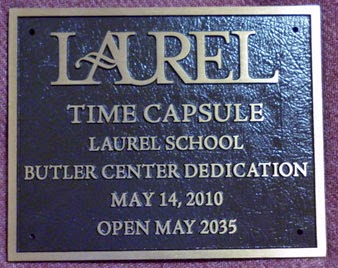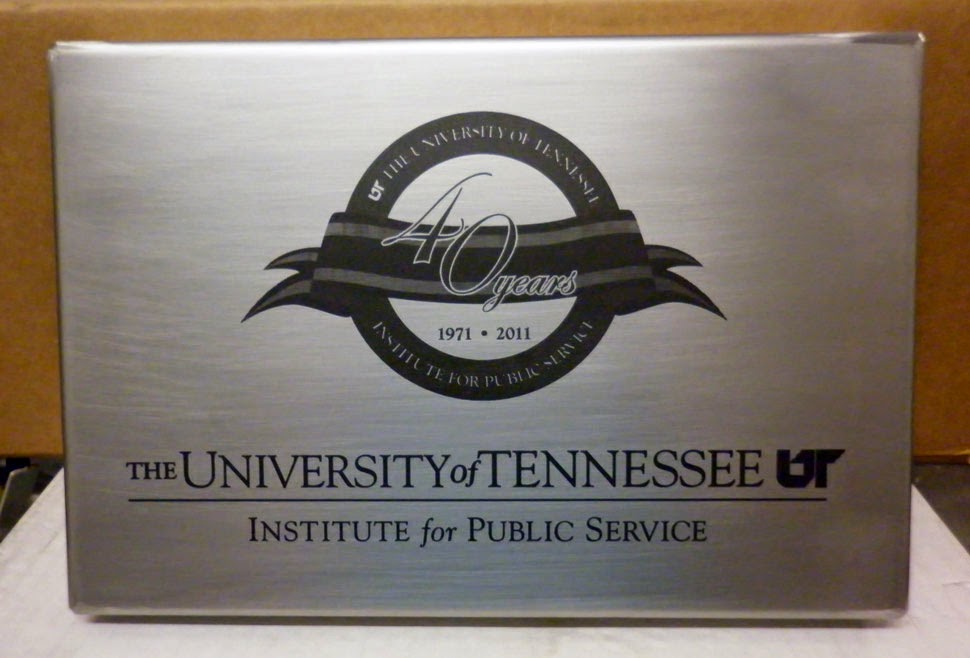 |
| Plaque castings feature poured metal and graphics need to allow plenty of spacing. |
Artwork Requirements for Engraving & Cast Plaques
Lately we have been inundated by customers and prospective customers who just don't 'get it' when it comes to artwork requirements for plaques and engraving. In particular, cast metal plaques are widely misunderstood. As one designer put it:In general, it's not that people are unintelligent, but rather, they're ignorant about the process of making plaques.But you don't have to have a degree in Graphic Arts to understand the requirements. Over the years I've learned that just because what you want on a plaque fits nicely when printed onto the same size paper, it doesn't mean it will fit on a cast plaque. Specific requirements for artwork, logos, and special fonts that we state on our website and brochures:
- Format must be in editable vector format (for example, *.ai (Adobe Illustrator up to CS5); *.cdr (CorelDraw up to X5); EPS files (*.eps) are acceptable but in vector format only.
- All fonts must be converted to curves or outlined
- All files must be in black & white only, no halftones or screens.
What do you mean by 'vector' graphics?
Definitions of vector are full of what it actually is, and that's good. For instance, Wikipedia says:Vector graphics is the use of geometrical primitives such as points, lines, curves, and shapes or polygon(s), which are all based on mathematical expressions, to represent images in computer graphics.But just understand that it's different. It's not the same as that JPG file of your logo.
So why do you have the JPG handy and not the vector? Because the computer you use may not have the right programs to view it. Again, from Wikipedia:
In our own shop, only one of our computers has the programs necessary to render such graphics. It's probably the same in your company. If you're not a graphics person and/or don't work with such graphics on a daily basis, why have the programs on your system?Modern displays and printers are raster devices; vector formats have to be converted to raster format (bitmaps – pixel arrays) before they can be rendered (displayed or printed)....It is easy to convert from a vector file to a range of bitmap/raster file formats but it is much more difficult to go in the opposite direction, especially if subsequent editing of the vector picture is required. It might be an advantage to save an image created from a vector source file as a bitmap/raster format, because different systems have different (and incompatible) vector formats, and some might not support vector graphics at all. However, once a file is converted from the vector format, it is likely to be bigger, and it loses the advantage of scalability without loss of resolution. It will also no longer be possible to edit individual parts of the image as discrete objects.
Engraved Laser Marking for Time Capsule Lid
So you can see from this explanation that when our requirement is for vector graphics, it's because we need to re-size the image without loss of the resolution or crispness of the image. Your JPG may work great for printing or for web graphics, but for engraving or rendering onto a plaque, it just doesn't work. Look to the creator of the logo for the right stuff.
Special Requirements for Cast Plaques
To allow for pouring of metal into the plaque molds:
- Minimum castable letter height is 1/4" all CAPITALS, or 3/8" Caps/Lower Case.
- Typesetting must allow for at least 1/16" white space between each letter
- Line stroke in letters and artwork can be no smaller than 1/16" or 4 pts thick.
The font you want to use is important. Some fonts are fancier than others so that the requirements of the cast plaque are more difficult to fulfill, and you may need to go to a larger plaque size.
You can just give us your wording and plaque size and let us work it up to see if it fits. You can have us find a font that's similar to the one you wish to use, too.
Another option for keeping the size of your plaque small (and your budget too) is to opt for the etched plaque. The cheapest is zinc. You can see lots of plaques made in zinc today and they certainly rival the look of a real cast bronze plaque. HOWEVER they will not last as long and cannot be subjected to the elements like a cast bronze or aluminum can. So it's best to keep these etched plaques indoors.
Sometimes it's true that "You can't have it both ways."
Make it simple.

No comments:
Post a Comment